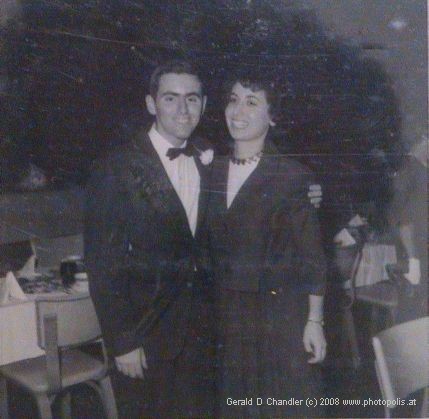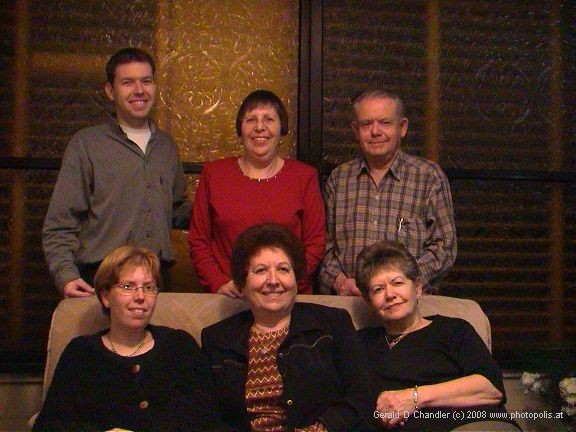Home |
Front Page |
Index |
Blog |
New |
Contact |
Site Map
Family Tree
Kazer Immigration Route
Kazer 1920 Census
Israel Komisars
Florida Kazers
Kiev Stotlands
New York City Stotlands
Zhytomyr Stotlands
My mother always said that she was born in a village called Naroditch, "near Kiev". She came to the USA at the age of three in 1913 and never really knew it. For some reason I never tried to find it on a map. I suppose that subconsciously I supposed that it was too small to be on a map. If it was large enough she would have dug out an atlas and pointed to it, wouldn't she? Then, years later it seemed worth no effort at all when she said that "naroditch" meant "village" and thus she was not certain where she was born. At least I think she said it, but now I wonder if somebody else said it.
As most of us do as we grow older we get more and more interested in our roots. Of course "roots" itself became one of the most famous of words, having far more than fifteen minutes of fame due to the book and TV show of the same name. And my interest has been spurred by relatives who have been doing lots of searching. The wife of a second cousin on my father's side has communicated her results to me. And my nephew on Jan's side has had amazing results in tracing his (and her) family back to the wilds of Scotland and maybe Ireland.

|
Thus when we came to Israel I knew that I would be making another attempt to make contact with a lost branch of the family. My grandmother Ette Stotland married Max Kazer and, as indicated, took my mother and her other children to the USA in 1913. Most of Ette's family, the Stotlands, stayed behind. One sister, Feige, married her uncle, Shmuel Stotland. Their daughter Eda Stotland married Aharon Kommissar and had three children. I had met their daughter Dvora when she came to Los Angeles about 1961 or 1962 to teach Hebrew and study at UCLA and the University of Judiasm. We saw each other once in a while but our lives were centered around our studies at different universities. One of our get togethers is recorded: the December, 1962 party to celebrate my parents' 30th wedding anniversary.
That was probably the last time I saw Dvora in Los Angeles because six months later I graduated from Caltech and left for graduate studies at the University of Illinois. The next time we did meet was just short of ten years later. It was in Israel, an Israel that was celebrating its 25th anniversary as a state. After that we lost touch —on a visit in 1985, having lost Dvora's address I failed to find her.
Now you might wonder why I didn't look in the phone book. The answer is simple — it's in Hebrew. I did ask friends to look and they told me there were no Komisar's in Tel Aviv. I wondered if there was some alternate spelling in Hebrew but there didn't seem to be. On this visit I asked again and got the same answer. Yuval Abend, our landlord, suggested various standard Israeli ways of contacting lost relatives, including writing to a radio show that specializes in that. I kept putting such things off, being enjoyably engaged in visiting the sites of Jerusalem. A month quickly passed and I had still done nothing.
Then, Dieu soit benit, out of the blue I got an email from Reva, a cousin in Chicago. She had just gotten an email account. I immediately replied asking if she knew Dvora's address. She didn't but she suggested asking another relative, Fred Grossberg, but she only had his phone number. But, amazingly enough, we had been emailing each other for several years. But Fred didn't have it. And then, a few days later, he found the family data that his deceased wife, Esther, had prepared ten years earlier. There was Dvora's address! I should have known! It was Ramat Gan, not Tel Aviv.

|
But would she still be there? Yuval checked the phone book for me and gave me the good news: he had the phone number. In fact there were several Komisars listed. I called the first number and on the first try got an answer. I was speaking to Dvora's sister Rahel. She quickly gave me Dvora's number and lo and behold I immediately got through to her. We were both excited to be talking to each other. She could hardly believe it, coming completely unexpectedly. I could hardly believe it, after so many years of failure. A few days later Jan and I went to Ramat Gan and had the pleasure of seeing her and meeting the other Komisars. After getting married, Eda and Aharon moved to Tashkent, a move that turned out to mean survival of the Nazi onslaught. Those who stayed behind in Naroditch all perished. After the war, in 1947, Eda, Aharon, and their three children, Emmanuel, Rahel, and Dvora, came to Israel. Emmanuel met Sarah and in turn had three children, Efrat, Aharon, and Smadar. (Aharon, Sarah, and Emmanuel are in the back row; Efrat, Dvora, and Rahel in the front; Smadar is not shown.)
Now back to Naroditch, or Narodichi, as I'll call it from now on since that is its official Ukrainian spelling. In our long evening of conversation of course our histories and Narodichi came up. I was greatly surprised and pleased to be told by Aharon that he had found it on the map. I asked to see their Atlas but it wasn't available. Luckily for me I have Microsoft Encarta on DVD and as soon as I got home I checked it — and I found a "Narodichi" on the map. It's about 130 km northwest of Kiev and, interesting, now that it is famous, 80 km west of Chernobyl). I was hopeful but not certain: my mother had said "near Kiev". Is 130 km near?
I showed my findings to the Komisars and they are pretty convinced that it is the right place. And, they noted that Babruysk is only 216 km to the north of Narodichi. What's so interesting about Babruysk? Aharon Komisar, the husband of Eda Stotland, came from Babruysk (now in Belarus) — in other words, close enough that they might somehow have met, thus giving one more confirming detail that we have found the right Naroditch/Narodichi.
Based on this I made a search of the internet for Narodichi. And, I found data, copied below, that shows (amazing to me) that Naroditch is Hungarian for Narodichi! And guess where the other information came from — a member of the town council, one Mrs Stotland, who undoubtedly is a distant relative of mine. Based on the data below I think it very possible that our ancestors' gravestones are still there. I think that Jan and I will visit there within the next six months.
NARODICHI: US Commission No.
UA05320501
Alternate name: Naroditch (Hungarian).
Narodichi is located in Zhytomyrskaya
at 51º12 29º5, 140 km from Zhytomyr, 25 km from Ovruch, 50 km
from Korosten
and 133 km from Kiev.
The mass grave is located at 1 km to North.
Present
town population is 1,000-5,000 with 11-100 Jews.
— Town officials: Village Council-Shevchenko Vladimir Vasilyevich [Phone:
91487].
Stotland Asya Yakovlevna of Narodichi, Kuybysheva Street 4.
The earliest known Jewish community was 1683. 1925 Jewish population (census) was 3269. The Jewish Hasidic mass grave was dug in 1941. Jews from no other towns or villages were murdered at this unlandmarked mass grave. The isolated rural (agricultural) flat land has no sign or marker. Reached by turning directly off a public road, access is open to all. A continuous fence with no gate surrounds the mass grave. 1 to 20 stones, all in original location with no surviving stones oppled or broken, date from the 20th century. No stones were removed. Some tombstones have metal fences around graves. The site contains marked mass graves. Municipality owns mass burial property. Properties adjacent are agricultural. Rarely, local residents visit site. This mass grave has not been vandalized. Local/municipal authorities did re-erection of stones. Occasionally, authorities clean or clear. Within the limits of the mass grave are no structures. Vegetation overgrowth is a seasonal problem, preventing access. Moderate threat: uncontrolled access and vandalism. Slight threat: weather erosion, pollution, vegetation, and proposed nearby development.
Kogan Leonid of Novograd-Volynskiy, Lenina Street 107, Apt. 42. [Phone: (04141)54259] visited site and completed survey on 10/8/95. Interviewed was Stotland Asya Yakovlevna of Kuybysheva Street, 4 on 20/08/1994.
NARODYCHI II: US Commission No. UA05320101
See NARODYCHI I for information on town information.
The cemetery, located at Shevchenko Street, was established in 19th century with last
known Hasidic burial in 1991.
No other towns or villages used this unlandmarked cemetery.
The isolated suburban flat land has no sign or marker.
Reached by turning directly off a public road, access is open to all.
A broken fence with non-locking gate surrounds.
The approximate size of cemetery
before WWII and now is 1.35 hectares.
21 to 100 stones, most in their original location, date from 1914.
Location of any removed stones is unknown.
The cemetery has no special sections.
Some tombstones have portraits on stones and/or metal fences around graves.
The cemetery contains no known mass graves.
Municipality owns property used for Jewish cemetery only.
Properties adjacent are agricultural.
The cemetery boundaries are unchanged since 1939.
Rarely, local residents visit.
The cemetery was vandalized during World War II and frequently in the last 10 years.
There is no maintenance now.
Within the limits of the cemetery are no structures.
Very serious threat: vegetation (constant problem).
Moderate threat: uncontrolled access and vandalism.
Slight threat: pollution and proposed nearby development.
Kogan Leonid of Novograd-Volynskiy, Lenina Street, 107, Apt. 42. [Phone: (04141)54259] visited site and completed survey on 20/07/1995. Interviewed was Stotland Asya Yakovlevna of Narodichi, Kubysheva Street, 4 on 20/07/1994.
NARODICI: (German) see Narodichi
NARODITCH: (Hungarian) see Narodichi